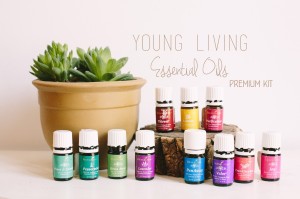
**This site is required to be compliant with government regulations of how we are allowed to speak of natural options. I speak a lot of “maintaining health” you’ll just have to read between the lines…
Let’s get back to basics here.
I write a lot about how we use pure therapeutic essential oils, it blows my mind, really it does. How can something like an essential oil support a healthy body exactly? I always thought they smelled good but were a little “hippy-ish”, so I kind of just brushed them aside and kept popping the chemicals or plugging in that Glade full of toxins.
Until I really took the opportunity to educate myself and make some changes
WE ARE TALKING ABOUT WHAT CAN HAPPEN WHEN, BY A CAREFUL DISTILLATION PROCESS, THE ACTUAL LIFEBLOOD AND ESSENCE OF A PLANT IS EXTRACTED, TESTED FOR THERAPEUTIC GRADE CONSTITUENCIES AND BOTTLED FOR HUMAN USE. NOW THAT IS AWESOME
By definition, essential oils are the vital fluids of plants, (if you take your fingernail and scratch it across a leaf, the juices that are released are part of those vital fluids). These fluids are necessary for the life of the plant and contain life force, intelligence, and vibrational energy that gives them properties that we can harness and use through distillation. Essential oils are composed of tiny molecules that can penetrate every cell, have the ability to maintain healthy brain systems and “protect normal health” at the most fundamental and basic level of our bodies.
Therapeutic grade essential oils often act as a channel between the physical body and the body’s electromagnetic field. Suffice to say that our physical bodies are secondary to and reflections of our subtle bodies composed of light and field energy. While there are numerous compounds in essential oils, to keep things simple let’s focus on the three basic compounds found in essential oils. They are Phenols, Monoterpenes, and Sesquiterpenes…. I call them the PMS of Chemistry!
PHENOLS
Phenols, which are a specific type of molecular compound found in many essential oils offer a host of cleansing properties. Phenols help to create conditions where we can maintain the utmost health. In addition to their possible high abilities, phenols may also promote a balanced hormonal state and healthy bodily function. Their most important feature is that they clean the receptor sites on the cells. If the receptor sites are not clean, cells cannot communicate, and they all require positive communication. The following essential oils contain phenols, with Anise essential oil being the highest in phenol content.
Anise (90%)
Clove (80%)
Basil (70%)
Oregano (70%)
Thyme (48%)
Calamus (30%)
Cinnamon (25%)
Monoterpenes
Monoterpenes are a specific type of molecular compound found in most essential oils and may offer a host of health properties. The absolute, most important property of the Monoterpene is the high ability to REPROGRAM mis-written information in the cellular memory. What happens when there is incorrect coding? Simply put, the we need healthy cells for our bodies to maintain “happiness”. Monoterpenes can also be spiritually elevating by stimulating the pineal gland. They are strong supporters of the immune system and boost the bodies “normal healthy” natural defenses. Here are some examples of oils with Monoterpene content….
Frankincense (82%)
Angelica (80%)
Cypress (77%)
Galbanum (75%)
Pine (60%)
Rose of Sharon (54%)
Juniper (54%)
Spruce (50%)
Myrtle (37%)
Sesquiterpenes
Sesquiterpenes are a specific type of molecular compound found in certain essential oils that may deliver oxygen to the cells. Since the size of the molecules of essential oils are extremely tiny, essential oils have the unique ability to protect normal “healthy” brain function. Oils high in sesquiterpenes can often be beneficial in memory and Brain Fog. Sesquiterpenes also may aid in deprogramming mis-written code in cellular memory. Hence their importance in supporting protection of “healthy” cell function. Whoa! Sesquiterpenes are truly the KEY to your healthy body. When oils high in sesquiterpenes are inhaled, there is increased activity in the pineal, pituitary and hypothalamus glands. Here are some essential oils high in sesquiterpene content…
Cedarwood (98%)
Vetiver (97%)
Spikenard (93%)
Sandalwood (90%)
Black Pepper (74%)
Patchouli (71%)
Myrrh (62%)
Ginger (79%)
Brain Power oil blend
All three compounds (phenols, monoterpenes, and sesquiterpenes) work individually and as a whole that have the ability to help maintain a state of equilibrium and balance!

To order oils and join our amazing team click HERE
Sources:
– Chemistry of Essential Oils Made Simple by David Stewart, Ph.D
– Healing Oils of the Bible by David Stewart, PhD
– Essential Oils Desk Reference 5th Edition by Life Science Publishing

3 Comments on “The Basics of Essential Oils”
Hello I am just beginning my meditation practice. Thank you for this.
Anxious to learn more about the benefits of oils…….
yes! Let me know if you need anything!